The Planets and Space Exploration
The four inner planets
at the center of the solar system
Mercury,
Venus,
Earth,
Mars,
are known as the terrestrial planets because
they are solid, rocky bodies.
Jupiter,
Saturn,
Uranus, and
Neptune are all composed primarily of gas and are
known as the Jovian planets or Gas Giants (Uranus and Neptune are sometimes called Ice Giants).
The space beyond Neptune contains thousands of icy worldlets that are not quite large enough to be full-fledged planets. Three dwarf planets - Pluto, Haumea, and Makemake - orbit in a region called the Kuiper Belt. Another dwarf, Eris, is also found beyond Neptune but in a more elliptical orbit.
The asteroid belt, between
Mars and Jupiter, is made of thousands
of chunks of rock which orbit the Sun. The dwarf planet Ceres orbits within the asteroid belt. Comets are small icy bodies that travel past the Sun and give off gas and dust
each time they pass by.
Unmanned spacecraft
have traveled to all the full-sized planets in the solar system and
taken pictures of the planets and many of their moons. They have also
taken measurements that tell us about the particle, electromagnetic, and
gravitational environment near the planets. This information can be used
to tell us about the planets interior, surface, atmosphere, and magnetosphere.
 Big, Bigger, Biggest
Big, Bigger, Biggest
 A Solar System Model Builders Guide
A Solar System Model Builders Guide
You might also be interested in:
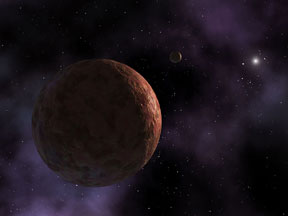
There are many icy and rocky planetoids on the outer edge of our Solar System. As a group, all bodies that orbit, on average, further from the Sun than the 8th planet Neptune are called Trans-Neptunian
...more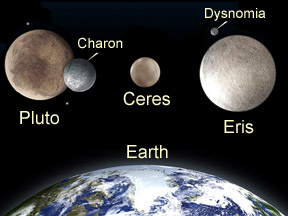
In 2006 the International Astronomical Union (IAU) approved a new classification scheme for planets and smaller objects in our Solar System. Their scheme includes three classes of objects: "small solar
...more
Pluto is a frigid ball of ice and rock that orbits far from the Sun on the frozen fringes of our Solar System. Considered a planet, though a rather odd one, from its discovery in 1930 until 2006, it was
...more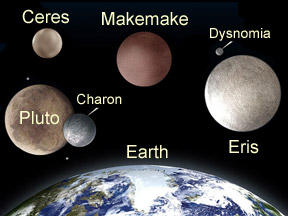
Makemake is a dwarf planet in our Solar System. Makemake was discovered on March 31, 2005 by a team of astronomers led by Mike Brown of the California Institute of Technology. The International Astronomical
...more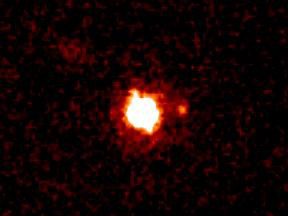
Eris is a dwarf planet that was discovered in 2005. Eris is a trans-Neptunian object (TNO) that orbits the Sun on the frozen fringes of our Solar System beyond the Kuiper Belt. Eris takes 557 years to
...more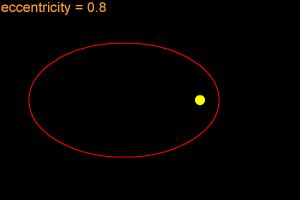
When one object is in orbit around another object, the orbit is usually an elliptical orbit. For example, all of the planets in our Solar System move around the Sun in elliptical orbits. An ellipse is
...more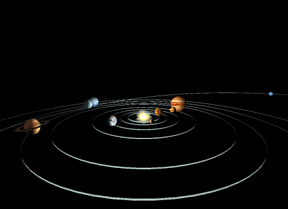
The solar system is made up of the Sun, // Call the planets count function defined in the document head print_planet_count('planets'); planets and // Call the planets count function defined in the document
...more















